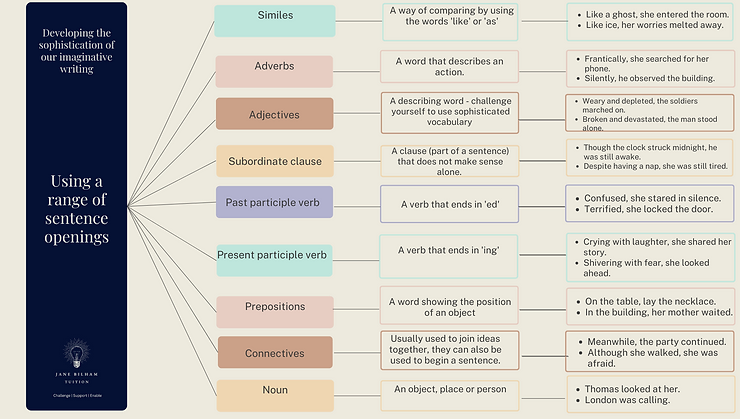The ‘The’ Problem
Top of my hitlist this week (and possibly my whole teaching career) has been sentence starters. My aim? To banish ‘The’ and ‘I’ from the openings of our imaginative writing responses and enlighten students on the vast array of alternatives that are available to them.
Applying some thought
So often, as a teacher and examiner, it becomes painfully apparent that students aren’t thinking about their writing – if they’re not interested, then how can they expect their reader to be? Sentence openings act as the perfect symbol of this lack of thought (or maybe just sheer panic in an exam situation) and equipping students with the tools to remedy this ailment can be a real quick win with tangible and often instantaneous results.
After noticing a pattern of repetitive openings in the written responses I collected last week, I began planning to address this in lessons this week. I was so upset that some unique ideas created by the planning strategy we worked on last weekwere often overshadowed by mechanical and pedestrian writing. It was…. well, boring. And my students are not boring – they are brimming with insightful, perceptive and complex ideas. So I set about trying to build the next layer of skills within the group.
Practise makes perfect
The ideal is obviously for students to internalise these skills so they are reminded less frequently – I long for the day when the density of my highlighting on their writing fades away. The reality is that we have to start somewhere and for us, that meant learning and identifying techniques that are available to us. Covid has robbed so many GCSE students of the opportunity to consolidate these skills and for these students, it was important to revisit the basics – something so many of us are unable to do because of the myriad of pressures on schools and teachers. So we discussed what a preposition was. We discussed what an adverb was. We discussed this without any fear or embarrassment and revelled in our new found knowledge and confidence.
The students realised very quickly that despite our learning objectives, this wasn’t just about varied sentence openings – varying our openings creates the opportunity to show off an array of skills: Wide vocabulary? Yes, it’s there when we think about the best adverb, adjective or verb to use in our opening. Using structures to create impact? Yep, evident when we make the decision to open with a subordinate clause or past participle. Use of imagery? Try opening with a simile.
By revising this relatively basic skill, we were hitting Assessment Objectives here, there and everywhere.

Target setting
Using the writing mat, we then created our own hitlist – which sentence starters were we going to challenge ourselves to use? After some modelling, students were then able to practise their skills in a place of safety and their ideas came to life. Gone was the boring ‘the’ – here to stay (hopefully!) are imaginative similes, adverbs and adjectives. They were able to articulate mood, atmosphere and emotion and they enjoyed writing. They paused and thought, they experimented – they smiled.
Their writing is now reflective of the energetic, enthusiastic and creative students I know -they had been stifled by a lack of confidence and knowledge but are now taking their first steps towards being equipped to articulate layers of meaning in their responses.
Sometimes it’s worth going back to basics. Some will need the scaffolds for a little longer. Some may even need to memorise three or four techniques to reduce the cognitive load in their exam. My hope for them is that by creating more opportunities to develop an awareness of the choices they are making, the more chance they have of internalising this skill.
Ultimately, it’s a win win situation: not only will students fulfil their potential as writers but I’ll no longer be subjected to the dreaded ‘The’ at the start of each sentence. And who doesn’t want to enjoy marking?
You can access various free and paid resources to further guide your revision here.
